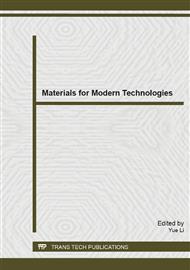p.217
p.221
p.226
p.232
p.238
p.249
p.254
p.259
p.263
Preparation and In Vitro Degradation of PDO Intravascular Stents with Braided Structure
Abstract:
In this paper, in vitro degradation behaviors of the PDO monofilaments and the stents were studied. The mechanical properties,morphology observation and Differential Scanning Calorimeter (DSC) of PDO monofilaments were determined, as well as the compression strength of the stents. The experimental results showed that the PDO monofilaments contained half of its original strength after 6 weeks degradation and lost its strength in the 10th week. DSC outcomes showed that the crystalline regions of PDO havent been hydrolyzed after 16 weeks of degradation. The stents demonstrated good compression behaviors for 12 weeks and therefore can be utilized in short-term application.
Info:
Periodical:
Pages:
238-245
Citation:
Online since:
April 2014
Authors:
Keywords:
Price:
Сopyright:
© 2014 Trans Tech Publications Ltd. All Rights Reserved
Share:
Citation:


